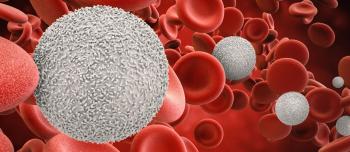A study published earlier this year compared the pharmacokinetics (PK) of two commercially available, plasma-derived products containing von Willebrand factor/factor VIII (FVIII/VWF). PK refers to the processing and duration of a drug’s effect in the body. The lead investigator of the study was Craig Kessler, MD, Hemophilia and Thrombophilia Comprehensive Treatment Center, Lombardi Comprehensive Cancer Center, Georgetown University Medical Center in Washington, DC.
The two products, which were compared in a head-to-head, randomized study, were wilate®, manufactured by Octapharma, and Humate-P®, manufactured by CSL Behring. Wilate® is indicated for the treatment of spontaneous and trauma-induced bleeding episodes in patients with severe VWD. It is also prescribed for patients with mild or moderate VWD in whom the use of desmopressin is known or suspected to be ineffective or contraindicated. Humate-P® is indicated for use in adult and pediatric patients for the treatment of spontaneous and trauma-induced bleeding episodes and prevention of excessive bleeding during and after surgery in severe VWD. It is also indicated for patients with mild to moderate VWD in whom use of desmopressin is known or suspected to be inadequate.
The study yielded PK profile data from 20 VWD patients, each of whom received a single dose of one concentrate, then a single dose of the other separately, with a seven day “washout” period in-between. Results showed that the PK profiles for VWF in both products were comparable. The FVIII PK profile for wilate® showed a decay of the protein occurring within the first 12-24 hours from the time of injection, while the PK FVIII for Humate-P® peaked at the same time.
“This study demonstrated bioequivalent PK properties for VWF between wilate and Humate-P,” concluded the authors. “The PK profile of wilate, combined with the 1:1 VWF/FVIII ratio, theoretically should facilitate dosing and laboratory monitoring of VWF replacement to prevent bleeding in individuals with VWD.” The results may allow for simplified dosing and monitoring of VWD product and could help avoid associated clinical complications.
The study, “The Pharmacokinetic Diversity of Two von Willebrand factor (VWF)/Factor VIII (FVIII) Concentrates in Subjects with Congenital von Willebrand Disease. Results from a Prospective, Randomised Crossover Study,” was published in the August 2011 issue of The Journal of Thrombosis and Haemostasis.
Source: PRNewswire, November 7, 2011





